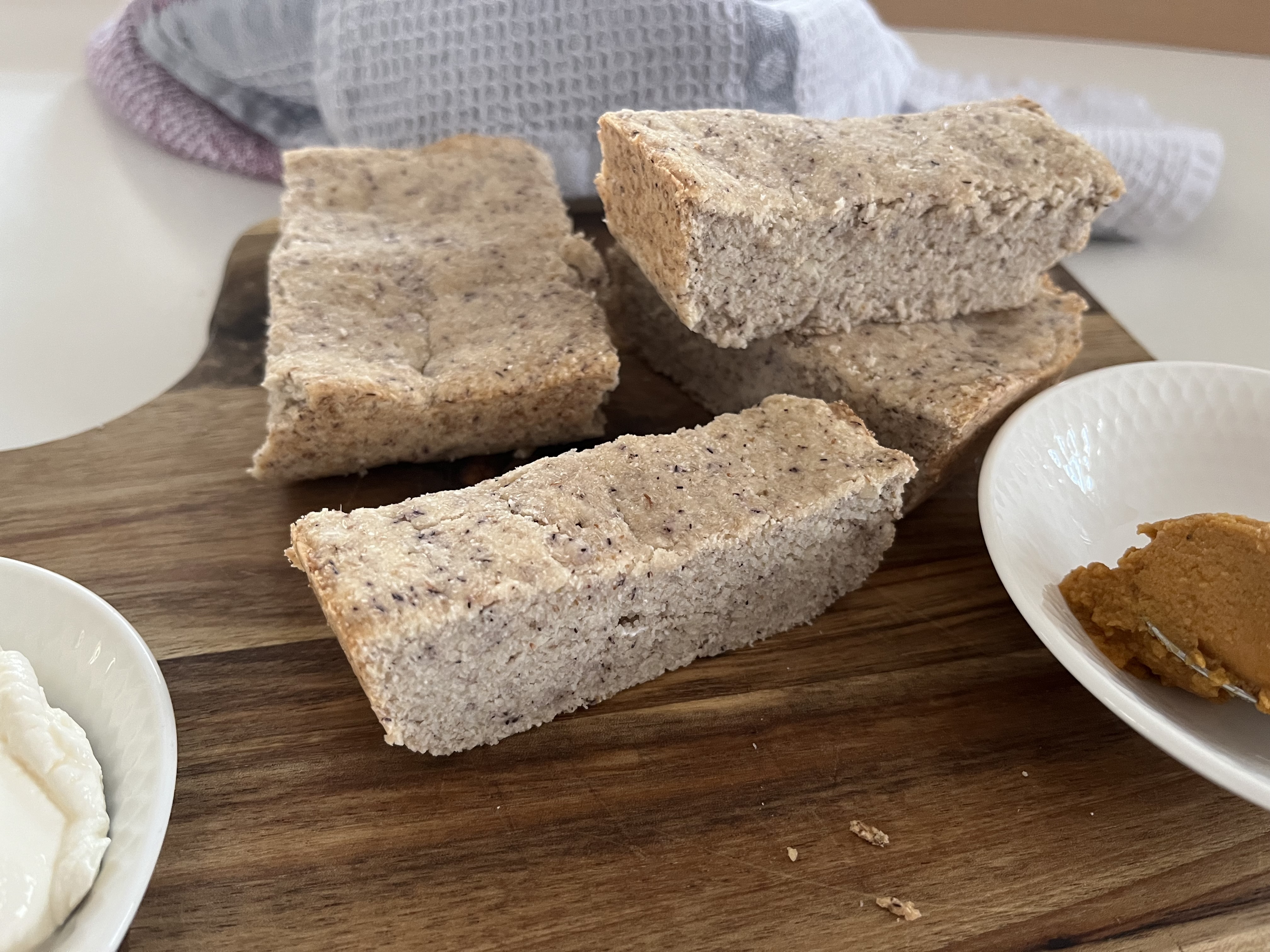 |
Nature’s Dessert Cookbook: Healthy, Delicious & Naturally Sweet Recipes Don’t want or can’t tolerate sugar alcohols and artificial sweeteners? This cookbook is for you! Every dessert is naturally sweetened with whole ingredients rich in fiber and protein, slowing sugar absorption and making them diabetic-friendly. It gathers your favorite recipes from the website—plus brand-new ones—all in one convenient place. Indulge in truly natural treats without compromise! |
 |
Diabetic Baked Goods: Everyday Bakes for Every Meal Diabetic cookbook designed to make healthy baking simple, accessible, and enjoyable. This collection of low-carb, high-fiber, and protein-rich recipes provides a reliable solution for those looking to enjoy diabetic bread and baked goods without blood sugar spikes. Every recipe includes a video tutorial, making it even easier to follow along and bake with confidence! |
 |
What Makes This Cookbook Different?
|
Greek Yogurt Recipes and Low-Fat Cheese: Creating Healthier Desserts
Greek yogurt recipes are perfect for creating healthy desserts that everyone will love. In this article we will see why and how.
Creating diabetic-friendly desserts that don't sacrifice taste is a journey many can relate to, especially if you have a diabetic child or are managing diabetes yourself. Greek yogurt, ordinary yogurt, and low-fat cheeses (cottage cheese, whey cheese etc.) are ingredients to consider for sweet treats.
These dairy products not only add rich flavors and creamy textures to desserts but also bring a host of nutritional benefits that make them an excellent choice for those looking to enjoy sweets without the unhealthy fats.1
Greek Yogurt and Other Dairy Options for Healthy Desserts
Greek yogurt shines in the world of healthy desserts. Known for its flavor and thick and creamy consistency, Greek yogurt is a versatile ingredient that offers more than just taste, Greek yogurt recipes often boast high protein content.
Choosing Greek yogurt for your dessert recipes can make a difference in maintaining a positive outlook on health. Greek yogurt is known for higher protein and lower carbohydrate levels than regular yogurt, which is beneficial for blood sugar management. Incorporating Greek yogurt and other healthy dairy options into dessert recipes can transform traditional high-fat, high-sugar treats into healthier options.
 |
 |
Ordinary yogurt, though not as thick as Greek yogurt, provides its own set of health advantages. It contains probiotics, the friendly bacteria that promote gut health, which can be particularly beneficial for individuals with diabetes in managing digestion and overall wellness.
Additionally, ordinary yogurt tends to have fewer calories and lower saturated fats compared to heavier dessert base options like cream or butter.
Low-fat options like whey cheese (ricotta), mozzarella, quark and cottage cheese serve as perfect bases for a range of healthier dessert options. These cheeses are typically lower in calories and saturated fats, reducing the risk of cardiovascular issues often associated with high-fat diets, without compromising the richness of your dessert.
Desserts made with these ingredients not only help maintain heart health but also contribute to a balanced diet. Incorporating Greek yogurt and low-fat cheese in your desserts can increase the intake of essential nutrients, such as calcium and vitamin D, which are crucial for bone health, another important consideration for those managing diabetes over the long term.
You might wonder about the salt and sugar content in these dairy products. Opting for plain, unsweetened and low-salt varieties allows you to maintain control over your dessert.
Practical Tips and Clever Tricks for Healthier Desserts
For example, substituting cream in a cheesecake with Greek yogurt can maintain the creamy texture and tangy flavor we love, while reducing unhealthy fats. The presence of calcium and probiotics is an added bonus.
Greek yogurt, with its thick and creamy texture, can be a wonderful substitute for high-fat cheeses, such as mascarpone, which is a key ingredient in the beloved dessert Tiramisu—a favorite in my family, including my diabetic son. I've experimented with different ratios, starting with a 1:1 ratio of mascarpone and Greek yogurt, and even using a higher proportion of Greek yogurt. Each time, I achieve a delicious dessert that doesn’t disrupt my son's blood sugar regulation.
Greek yogurt can also effectively replace butter in desserts and baked goods. Even though I use butter with a reduced fat content, I try to minimize it further without compromising the texture of the dough. In certain desserts and pastries, butter can be completely substituted with Greek yogurt, resulting in a healthier and more nutritionally balanced final product.
I often use plain yogurt to reduce or completely eliminate the need for oil in recipes, as fats, although indirectly, can significantly impact blood sugar levels and cause glycemic instability. According to our expirience it is better to be careful with it. Depending on the consistency and structure of the dough, I also use firm yogurt to replace cream in many desserts, especially those with shortcrust pastry or cookies that typically contain high-fat cream.
My general rule:
- a liquid dairy product like yogurt can replace a liquid component in traditional recipes
- a creamy dairy product like Greek yogurt can substitute or complement creamy cheeses from the original recipe
- low-fat cheeses such as cottage cheese or whey cheese can be easily whipped with an egg, sweetener, and other ingredients, often replacing regular-fat cheese or butter partially, and in many cases, completely.
This way, the dessert still has the necessary fat content to avoid dryness, and we have necessary fat but in a far healthier and more moderate form.
Embrace Creativity and Keep an Open Mind
The key is to be inventive and open-minded. Experimentation in the kitchen is an adventure that can lead to healthier and more satisfying desserts. Embrace the opportunity to try new combinations, like mixing ordinary yogurt with fresh fruits and nuts or adding Greek yogurt for a creamy texture and nutritional boost.
From my own warm experiences in crafting these desserts, I can tell you that these alternatives don’t restrict creativity or flavor. If anything, they open new doors to understanding and enjoying sweets without guilt.
In summation, Greek yogurt, ordinary yogurt, and low-fat cheeses represent the optimistic possibility of relishing desserts without compromising health or nutrition. They prove that with thoughtful choices, dessert can remain a cherished part of life.







